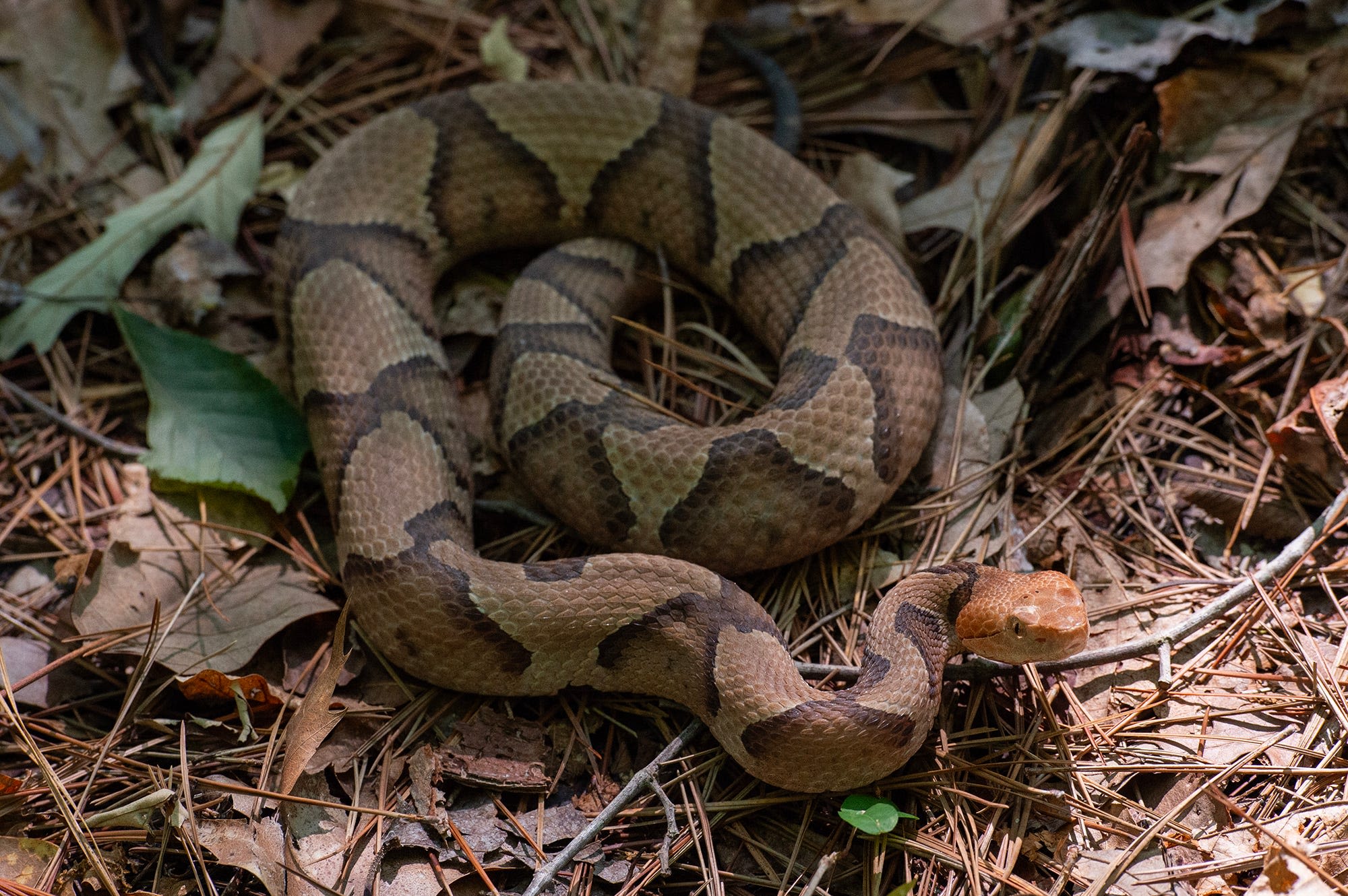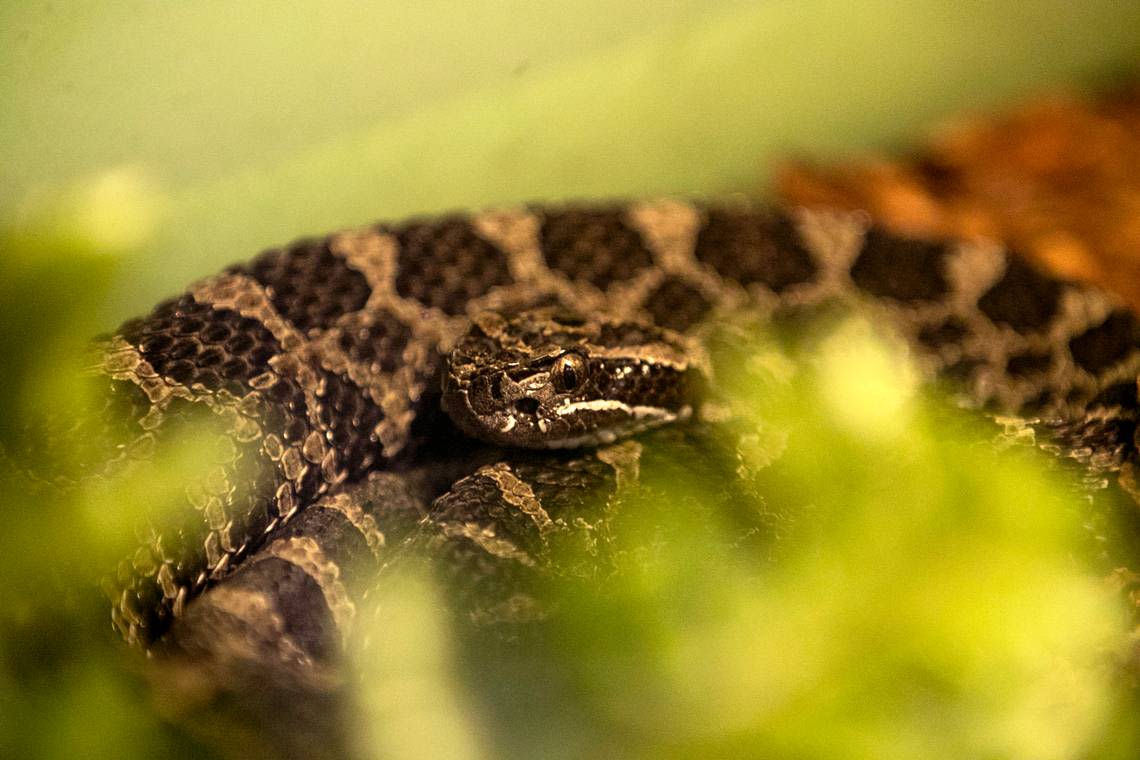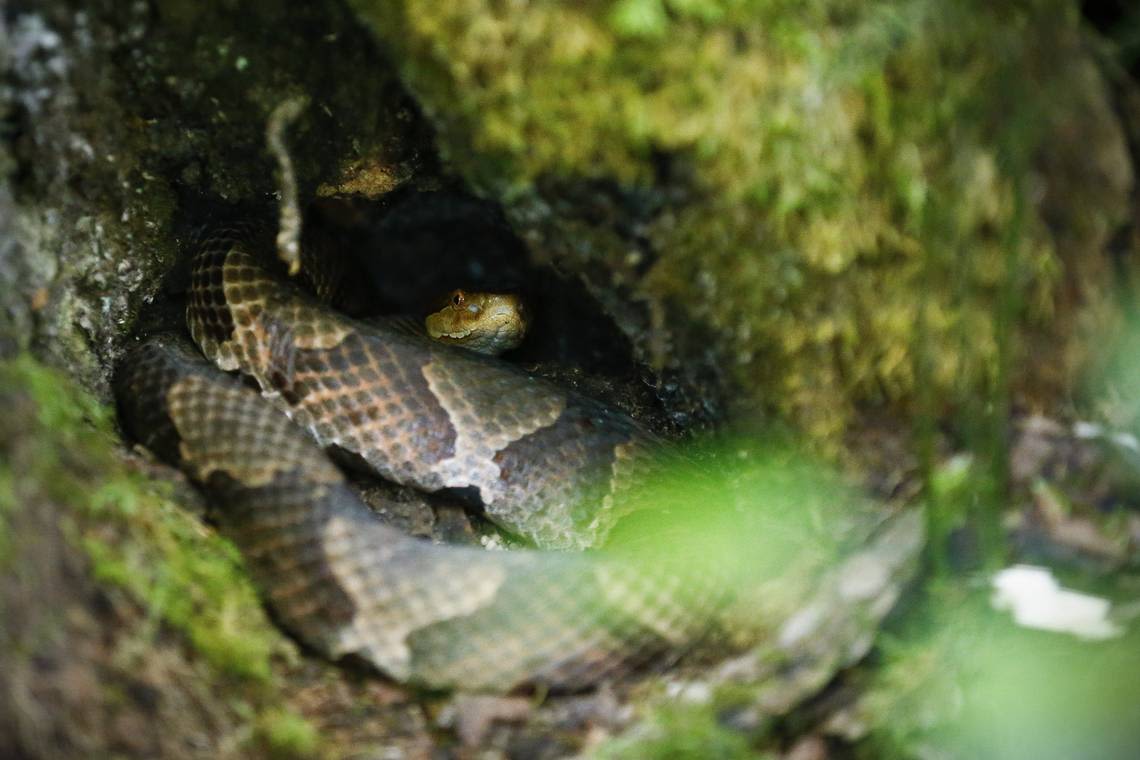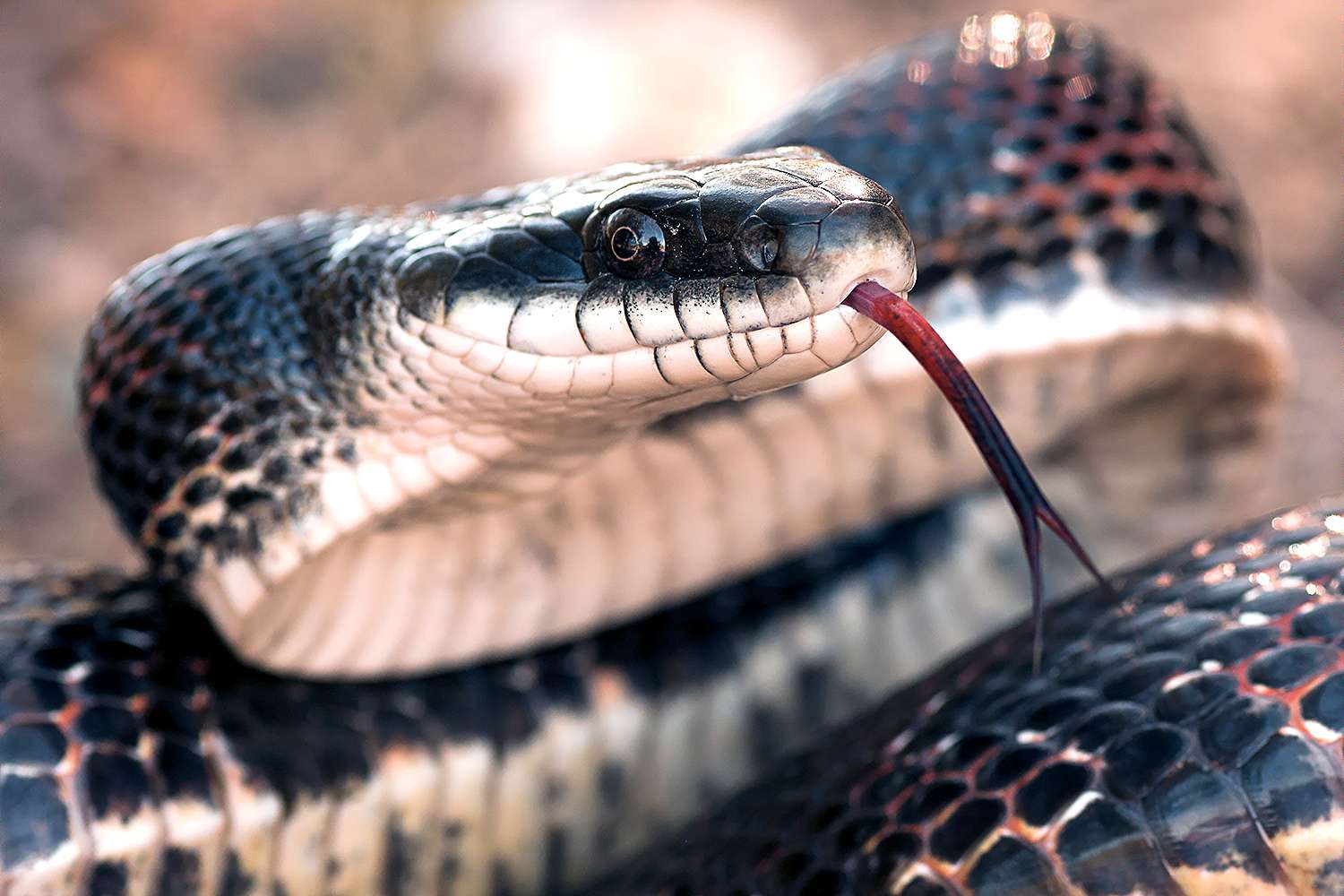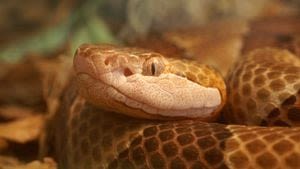Search results
- Autumn Spanne
- Inland Taipan. Considered the world’s most venomous snake, Australia’s rare and reclusive inland taipan (Oxyuranus microlepidotus) mounts rigorous self-defense when provoked, striking with one or more bites.
- Black Mamba. The black mamba (Dendroaspis polylepis) inhabits vast areas of savannah, hill country, and forests in southern and eastern Sub-Saharan Africa.
- Boomslang. The reclusive boomslang (Dispholidus typus) is native to central and southern Africa and generally blends with the browns and greens of trees and shrubs.
- Blue Malayan Coral Snake. The blue Malayan coral snake (Calliophis bivirgatus) has a pair of dazzling light blue stripes running the length of its blue-black body and a red-orange head and tail.
- Rattlesnakes
- Cottonmouths
- Copperheads
- Coral Snakes
1. Western Diamondback Rattlesnake
The Western Diamondback Rattlesnake is an abundant species of Rattlesnake in the southwest United States. They typically grow to be anywhere between 4-6 feet with adult males growing larger than adult females. These snakes are thought to be responsible for the most venomous snake bites in the United States.
2. Eastern Diamondback Rattlesnake
The Eastern Diamondback Rattlesnake is the largest species of Rattlesnake and actually one of the largest venomous snakes in the world (Wildlife Informer | Largest Venomous Snakes in the World). Eastern Diamondbacks can get up to nearly 8 feet long, however the average Eastern Diamondback is between 5-6 feet.
3. Sidewinder
The Sidewinder gets its common name from the way it moves. Sidewinders move their coils (you guessed it!) sideways which allows them to get traction on desert sand. This type of movement allows for them to move incredibly quick, up to 18 mph! On average, they are between 19.5-31.5 inches. There are 3 known subspecies: 1. Mojave Desert Sidewinder (Crotalus cerastes cerastes) 2. Sonoran Desert Sidewinder (Crotalus cerastes cercobombus) 3. Colorado Desert Sidewinder (Crotalus cerastes laterorepens)
18. Cottonmouth/ Water Moccasin
Like Rattlesnakes, Cottonmouths are pit vipers that have specialized organs to help them detect changes in temperature that they use to catch their prey. Cottonmouthsare very common in the Southeastern United States and are found around bodies of water. On average they grow to be 31 inches. There are three subspecies found in the US: 1. Florida Cottonmouth (Agkistrodon piscivorous conanti) 2. Western Cottonmouth (Agkistrodon piscivorous leucostoma) 3. Eastern Cottonmouth (Agkistrodon piscivor...
19. Eastern Copperhead
Copperheads are in the same genus as Cottonmouths and share many similarities, but people typically separate them, maybe due to the fact that Cottonmouths and Copperheads are associated with different habitat types. Copperheads seem to prefer forested areas and reach lengths up to 20-37 inches. There are five subspecies of Copperheads in the US: 1. Northern Copperhead (Agkistrodon contortrix mokasen) 2. Southern Copperhead (Agkistrodon contortrix contortrix) 3. Broad Banded Copperhead (Agkist...
20. Eastern Coral Snake
Coral snakes are in the Elapidae family, which also includes snakes like kraits, cobras, king cobras. They have incredibly potent venom which can be deadly. The Eastern Coral Snake is typically around 30 inches. They have very distinct black, red, and yellow bands along their body.
21. Texas Coral Snake
Texas Coral Snakes look very similar to Eastern Coral Snakes and were once considered to be a subspecies of the Eastern Coral Snake. On average, Texas Coral Snakes are a bit smaller than their relatives and grow to be 24 inches.
22. Sonoran Coral Snake
The Sonoran Coral Snake can be found in the Southwestern United States. They are very secretive and spend much of their time underground but will come out at night to hunt. Sonoran Coral Snakes grow to be anywhere between 11-24 inches long. Want to learn more about U.S. venomous snakes? Check out this article out where we show the venomous snakes found in each state.
- Inland taipan. The inland taipan is one of the most venomous snakes, according to the International Journal of Neuropharmacology, meaning just a teensy bit of its venom can kill prey (or human victims).
- Coastal taipan. You could be bitten multiple times before becoming aware of the coastal taipan (Oxyuranus scutellatus), thanks to its incredible speed, according to the Australian Museum.
- King cobra. The king cobra (Ophiophagus hannah) is the world's longest venomous snake, measuring up to 18 feet (5.4 m), according to the Natural History Museum in London.
- Banded krait. The banded krait (Bungarus fasciatus) is a slow mover during the day and is much more likely to bite after dark. The snake's venom can paralyze muscles and prevent the diaphragm from moving, according to a 2016 study published in the journal PLOS Neglected Tropical Diseases.
Venomous snakes are species of the suborder Serpentes that are capable of producing venom, which they use for killing prey, for defense, and to assist with digestion of their prey. The venom is typically delivered by injection using hollow or grooved fangs, although some venomous snakes lack well
News about snakes, Pennsylvania, South Carolina
News about Georgia, Timothy Taylor, Mock viper
- 4 min
- Eastern Brown Snake (Pseudonaja Textilis) Eastern Brown Snakes are responsible for more fatalities than any other snake in Australia. They are often found living near human habitations and are one solid color that can range from gray, to brown or black.
- Mainland Tigersnake (Notechis Scutatus) The Mainland Tigersnake, like many of the deadliest snakes at the top of our list, is an Elapid species native to Australia.
- Inland Taipan (Oxyuranus Microlepidotus) The Inland Taipan is very famous when it comes to venomous snakes. Many deadliest snake lists have the Inland Taipan at #1.
- Russell’s Viper (Daboia Russelii) The Russell’s Viper is regarded as one of the most dangerous snakes in Asia. This species has a large range and can be found anywhere from Western India to Eastern China.
Top 10 Most Venomous Snakes. Venom is an extremely valuable tool for a snake. It can be used to deter predators as a form of self-defense. In addition, venom helps snakes overpower their prey, aiding in immobilizing them and preparing them for consumption. Each year, an estimated 5.4 million people are bitten by snakes, with 2.7m from venomous ...
Although the chances of running into a venomous snake, much less being bitten and dying from the toxin injected into one’s body, are miniscule compared to dying from cancer, heart disease, or an automobile accident, this seemingly unreasonable fear remains very real for many people.
